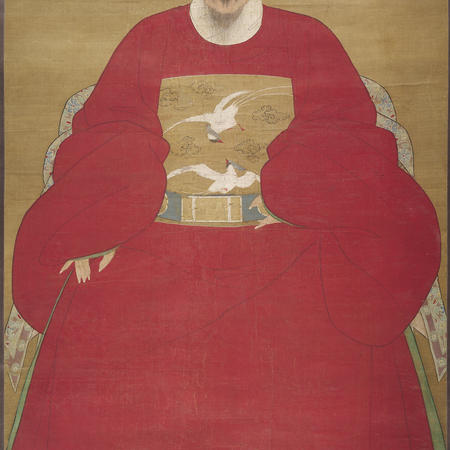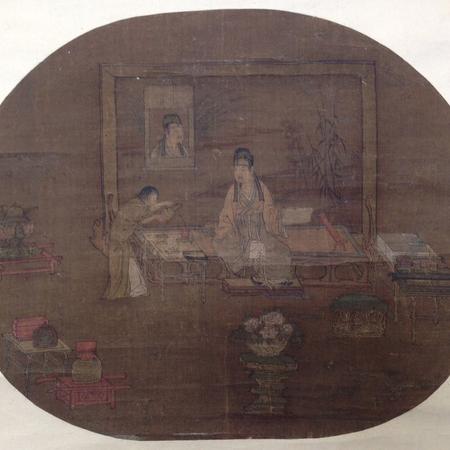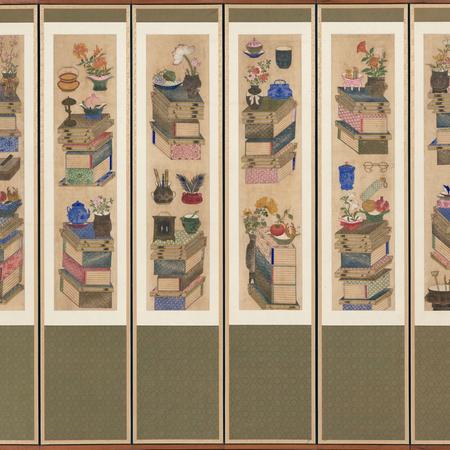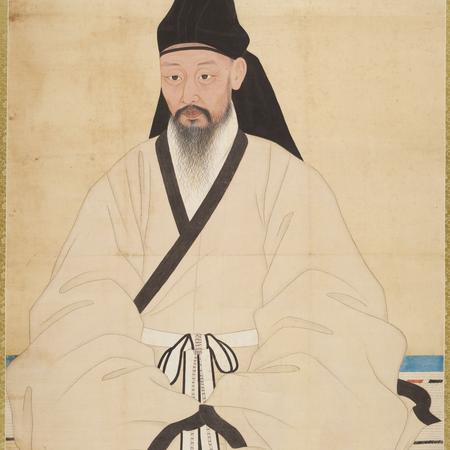GALLERY 2600 | EAST ASIAN ART
 The educated scholar has long held a position of high esteem in East Asia. As early as the Han dynasty (206 BCE–220 CE), men who wished to serve in government were required to pass rigorous civil service examinations that demanded, among other things, a mastery of classical Confucian texts. By the Northern Song period (960–1127), a revival and reinterpretation of the teachings of Confucius (551–479 BCE) resulted in Neo-Confucian ideologies that placed even greater emphasis on human propriety, ethical behavior, and self-cultivation. During this period, the concept of the ideal scholar-gentleman began to emerge—a man of letters who possessed a deep knowledge of history, literature, and the law and whose skills with the brush enabled him to reveal his moral rectitude and cultivated mind through the arts of calligraphy, painting, and poetry. This model persisted through the Ming (1368–1644) and Qing (1644–1911) dynasties in China and during the Chosŏn dynasty (1392–1910) in Korea, where Neo-Confucianism was adopted as the state ideology. In times of political strife and upheaval, scholar-officials sometimes withdrew from government service, preferring a simple life in the country instead of serving an unsteady ruler. There they took both physical and mental refuge among nature’s streams and mountains, sometimes alone, sometimes in the company of like-minded scholars. Others sought to escape closer to home—in the gardens or studios they built in their urban residences. With waterways, plants, and unusual rock formations, a garden enabled the scholar to step away from his official duties and imagine himself out in nature. The scholar’s studio, which ideally faced a garden, provided a clean, quiet space where one could paint, compose poetry, and enjoy other pastimes befitting a literatus, such as playing music, burning incense, or admiring antiquities.
The educated scholar has long held a position of high esteem in East Asia. As early as the Han dynasty (206 BCE–220 CE), men who wished to serve in government were required to pass rigorous civil service examinations that demanded, among other things, a mastery of classical Confucian texts. By the Northern Song period (960–1127), a revival and reinterpretation of the teachings of Confucius (551–479 BCE) resulted in Neo-Confucian ideologies that placed even greater emphasis on human propriety, ethical behavior, and self-cultivation. During this period, the concept of the ideal scholar-gentleman began to emerge—a man of letters who possessed a deep knowledge of history, literature, and the law and whose skills with the brush enabled him to reveal his moral rectitude and cultivated mind through the arts of calligraphy, painting, and poetry. This model persisted through the Ming (1368–1644) and Qing (1644–1911) dynasties in China and during the Chosŏn dynasty (1392–1910) in Korea, where Neo-Confucianism was adopted as the state ideology. In times of political strife and upheaval, scholar-officials sometimes withdrew from government service, preferring a simple life in the country instead of serving an unsteady ruler. There they took both physical and mental refuge among nature’s streams and mountains, sometimes alone, sometimes in the company of like-minded scholars. Others sought to escape closer to home—in the gardens or studios they built in their urban residences. With waterways, plants, and unusual rock formations, a garden enabled the scholar to step away from his official duties and imagine himself out in nature. The scholar’s studio, which ideally faced a garden, provided a clean, quiet space where one could paint, compose poetry, and enjoy other pastimes befitting a literatus, such as playing music, burning incense, or admiring antiquities.
Drawn entirely from the permanent collections, this installation features Chinese and Korean paintings of scholars and activities associated with them. It includes portraits of scholar-officials in formal dress; paintings of scholars appreciating nature or engaged in literati amusements; and a folding screen depicting books and scholars’ accoutrements. Later jades in the form of objects for the scholar’s studio complement the paintings.
Dec 2016 – May 2017





